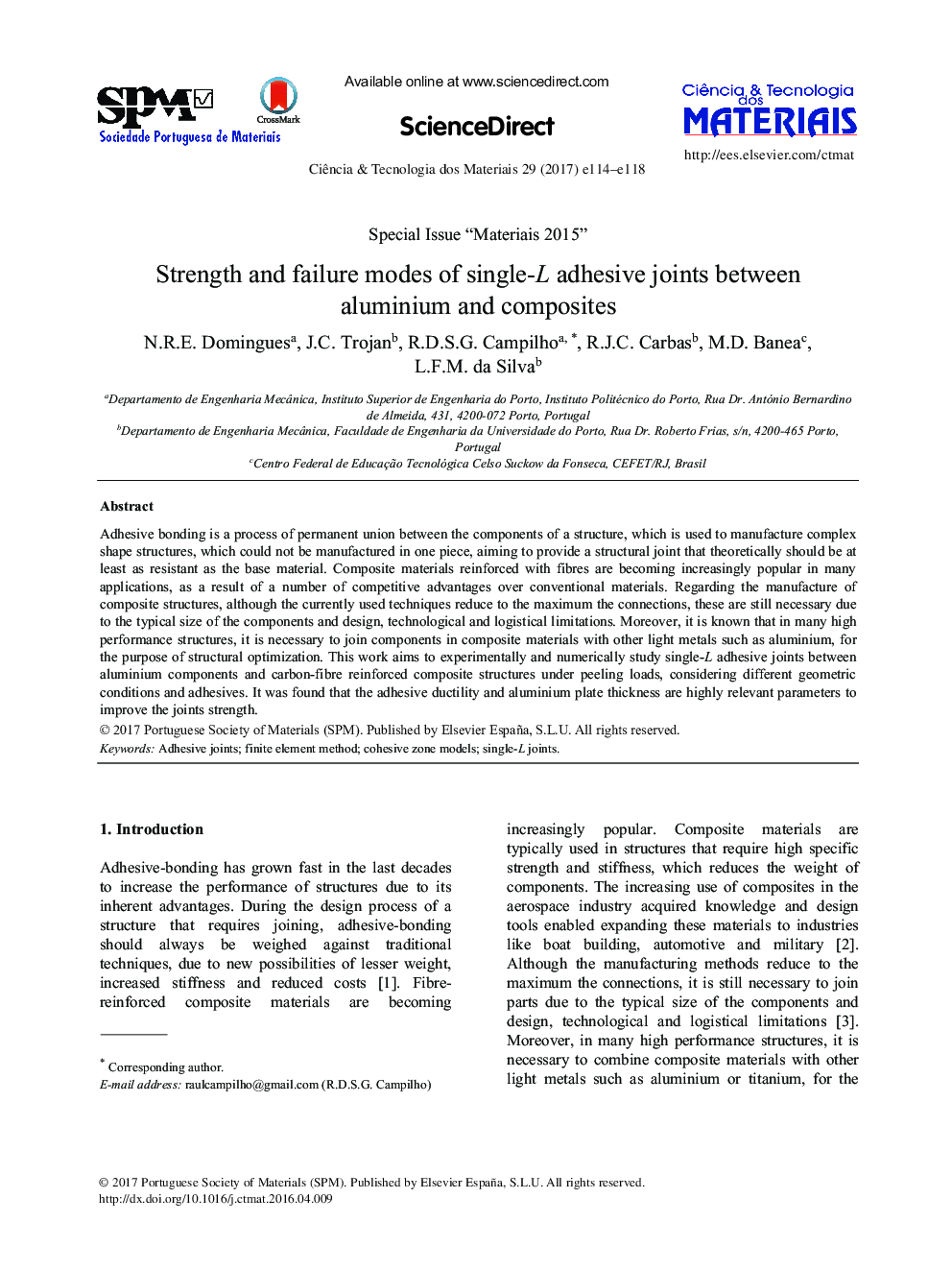| Article ID | Journal | Published Year | Pages | File Type |
|---|---|---|---|---|
| 7211626 | Ciência & Tecnologia dos Materiais | 2017 | 5 Pages |
Abstract
Adhesive bonding is a process of permanent union between the components of a structure, which is used to manufacture complex shape structures, which could not be manufactured in one piece, aiming to provide a structural joint that theoretically should be at least as resistant as the base material. Composite materials reinforced with fibres are becoming increasingly popular in many applications, as a result of a number of competitive advantages over conventional materials. Regarding the manufacture of composite structures, although the currently used techniques reduce to the maximum the connections, these are still necessary due to the typical size of the components and design, technological and logistical limitations. Moreover, it is known that in many high performance structures, it is necessary to join components in composite materials with other light metals such as aluminium, for the purpose of structural optimization. This work aims to experimentally and numerically study single-L adhesive joints between aluminium components and carbon-fibre reinforced composite structures under peeling loads, considering different geometric conditions and adhesives. It was found that the adhesive ductility and aluminium plate thickness are highly relevant parameters to improve the joints strength.
Related Topics
Physical Sciences and Engineering
Engineering
Engineering (General)
Authors
N.R.E. Domingues, J.C. Trojan, R.D.S.G. Campilho, R.J.C. Carbas, M.D. Banea, L.F.M. da Silva,
